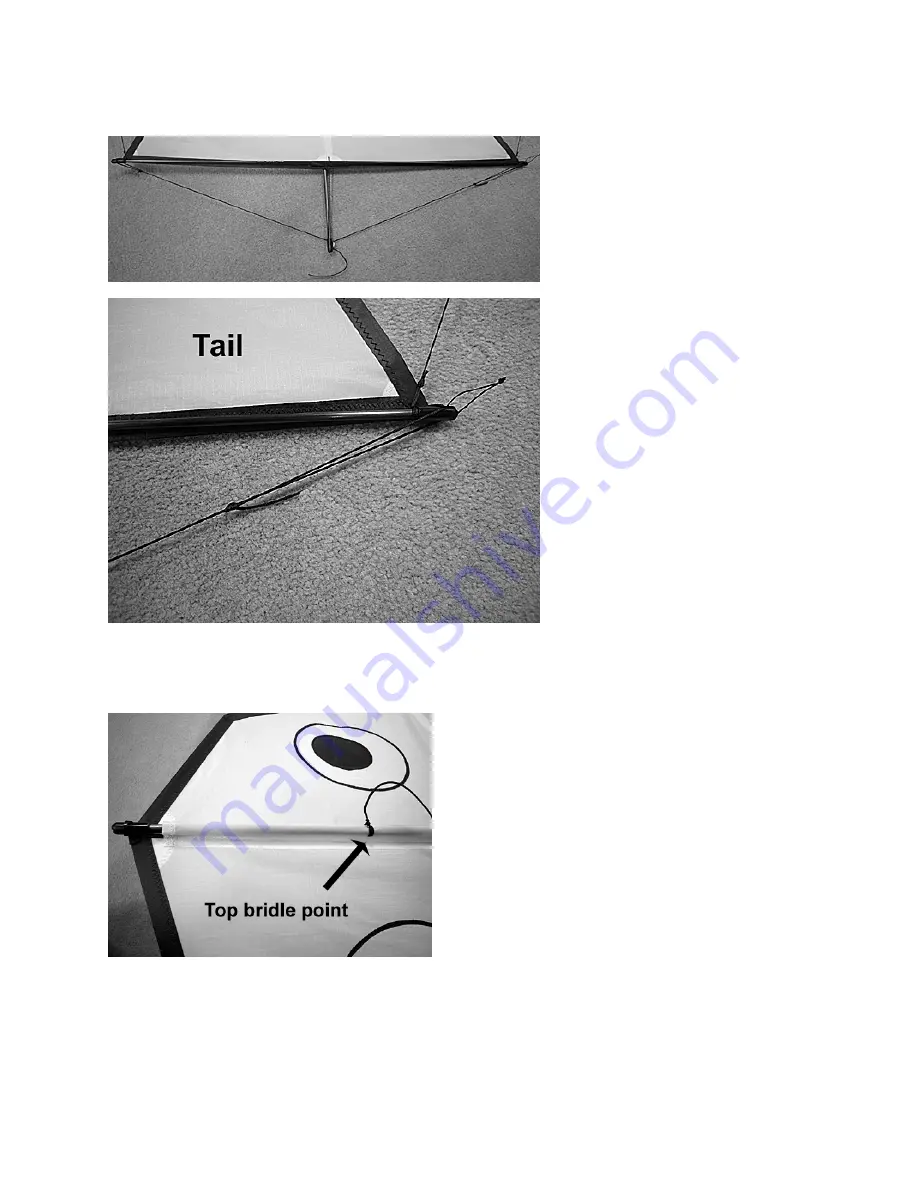
13
Now construct a sliding tensioner
loop on each end of the line. You
will not use a ring or hook.
Rather, the loop formed will slip
over the tail spreader rod stubby
nock.
Bridling:
Cut one 30 cm piece of line from the bridle line. Make a loop and set aside. This will
be your tow point.
Use the remaining line for your bridle. Attach
one end 16 cm (6.25 inches) from the top. Using
a needle, penetrate the spine sleeve and wrap the
line around the rod. Leave it loose enough to be
able to remove the spine rod if necessary. Tie a
knot. Repeat with the other end of the bridle line,
at 26 cm (10.25 inches) up from the bottom of
the
kite skin
(not from the bottom of the rod).
Lark's head the loop to the bridle as your tow
point. A good starting point for the tow point is a
bit less than 2 meters from the top bridle point.
A nice sized bag will measure 165 long x 15cm wide (finished size laying flat). Cut size
approximately 170 cm x 32 cm wide.
Done! Enjoy flying your replica
Vogeldrachen
, or bird kite.
Questions? Email us at [email protected], Bob and Charmayne
































